Elation for the Wonderbox 6000: Digital Tchotchkes Has Crafted a Clay World Filled With Game Collectors and Killers
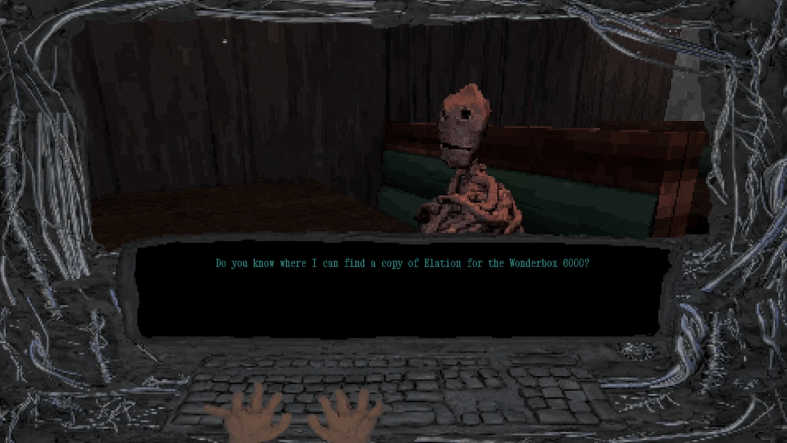
I think for many of my dear readers, the idea of pining over a game from your childhood is an all too familiar feeling. Be it one that we played over at a friend’s house, our favorite demo from a demo disc, or a game we owned that was unfortunately lost, or worse, traded in for pennies on the dollar at a gaming store. This feeling of chasing after a piece of your childhood is the driving conflict for Elation for the Wonderbox 6000, an upcoming first person adventure game from Digital Tchotchkes set in a surreal city, filled with interesting characters.
The title had initially grabbed my attention with its unique hand animated clay characters, but as I learned more about the title I was intrigued by its nihilistic tone and mysterious setting. With so little information about the game and the world of Elation for the Wonderbox 6000 as a whole, I was eager to learn more. I reached out to Logan, the solo dev behind Digital Tchotchkes, to see if he was willing to meet with me to discuss his upcoming title, as well as his previous artistic endeavors. Thankfully he was able to take time from sculpting clay and crafting city streets to have a conversation with me.
After exchanging introductions and thanking him for his time, I began the interview, searching for answers about a cool game just like the protagonist of Elation for the Wonderbox 6000.
First and foremost, before we dove into any of his games, because I thought he had chosen an excellent name for his solo studio, I had to ask where the name Digital Tchotchkes came from?
Logan: To be honest, I’ve used the name Tchotchkes on various things, just a word I liked. And then, when I was trying to come up with the name to put games out under I was like, “I mean, they’re tchotchkes in a way.” Sort of a way to not take it too seriously… It’s one of those things where I definitely chose it because I kind of just liked how it sounded. But it’s something that the more I think about it, especially with that kind of alt-games scene, you enter into a lot of ways of describing a game that like, I think traditional ways don’t feel right, but then a lot of the alternative ways kind of come off as a little, I don’t want to say pretentious, but it’s like, I just don’t feel comfortable describing my stuff that way. Feels like it’s the kind of thing someone else should define it as.
I commented that it seemed like a difficult task, as Elation for the Wonderbox 6000 seemed like it could be a hard game to describe on paper.
Logan: Yeah, I mean to be honest I have a hard time describing it as well, when writing the steam page and stuff. It’s more in the style of classic adventure games then Go Fly a Kite, Go Fly a Kite was very strictly narrative. But it’s still very narrative focused, I would say. It’s hard to describe it in a way that doesn’t just feel like I’m telling you the plot of the game. It took me a while to write the steam page. I’ll say that.


I told Logan that I felt as though the product would speak for itself once people saw it. I feel as though he has a definitive style that he has executed well in his upcoming title.
Logan: Yeah, I you know, it’s something where I don’t feel like I can be the full judge of it. But I think honestly, one of the nicest things I ever heard about my game was when someone reviewed Go Fly a Kite, and they were like, “you know, you see a lot of stuff that’s weird for the sake of weird, but clearly this guy has something he’s putting into it.” And it’s like, alright, that’s what I am doing, and also it means a lot to know that people get that, you know.
On the topic of Go Fly a Kite, I was curious as to whether or not this was his first title, seeing as it is the only title he has listed online at this time. With the work he has done on Elation for the Wonderbox 6000, I would not have been shocked to learn that he had been at it longer than he showed. so I asked Logan if this was his first foray into game development, or if he had dabbled in other artistic ventures that were adjacent to game design in some way?
Logan: So I was in bands years ago, that was my primary, like, real artistic endeavor. To be honest, one of the reasons why I moved to games was I’d make music. Like, I love playing in bands, but I’ve never been good at writing music, and I would write music that I found to be kind of boring. And I was like, well, maybe if there was something this was too, you know, then that it could work. And I started thinking of how it would fit in a room, and then what would be in that room. And it was like, “Oh, this this is games.” And then I started you know, trying to look into making games, because I love games. You know, I was getting back into stuff more after college because I had time. And playing a lot of real indie stuff that was really interesting. And also just like, when there’s that sense of like, “I could make this” not necessarily in like,” this is so simplistic, I could make this” but in a “Oh, like a man could make this.” You know, you play some triple A game, it’s like, this clearly requires 4000 people and billions of dollars, there’s just no way I’m going to be able to make something like this. Versus something that’s scaled down and is possible to be done by a single person.
So I started making games, and Go Fly a Kite was the first thing I released publicly, there were a couple of sort of like, failed attempts. Playing around with different engines, like this game Elation for the Wonderbox 6000 actually started out as an RPG Maker title. Because I felt like that was the simplest way, but I couldn’t make anything I liked in that. And I just said, “let’s try to make the thing I want.” And so I started getting into unity and all that. And in fact, actually Go Fly a Kite was supposed to be this game, before I realized I wanted to pare it down, make something smaller. And I had a story idea for something that would work in that way.
Speaking about the scope of the game, I told Logan that it seemed like a rather large step to go from a narrative game like Go Fly a Kite to the expansive open city of Elation for the Wonderbox 6000.
Logan: Yeah, I mean, I’m guessing it’ll probably take like one to two hours to play and I’m hoping it’ll be somewhat dense. It kind of ends up being just you know, however many ideas I have for it and what I can find interesting to put into it till it feels done. It’s definitely bigger than then Go Fly a Kite was and there were definitely reasons why I ended up doing that one first, just because it was smaller, less moving parts. And you know, other games I wanted to make that I was like, “oh these have way more moving parts. Once I can get something smaller done, then I’ll move on to that” and you know, so on and so forth. And I think Elation for the Wonderbox 6000 is bigger than the last one, it’s probably going to be smaller than the next one, but I think at some point I might go back to making small things once I realized that that sucks
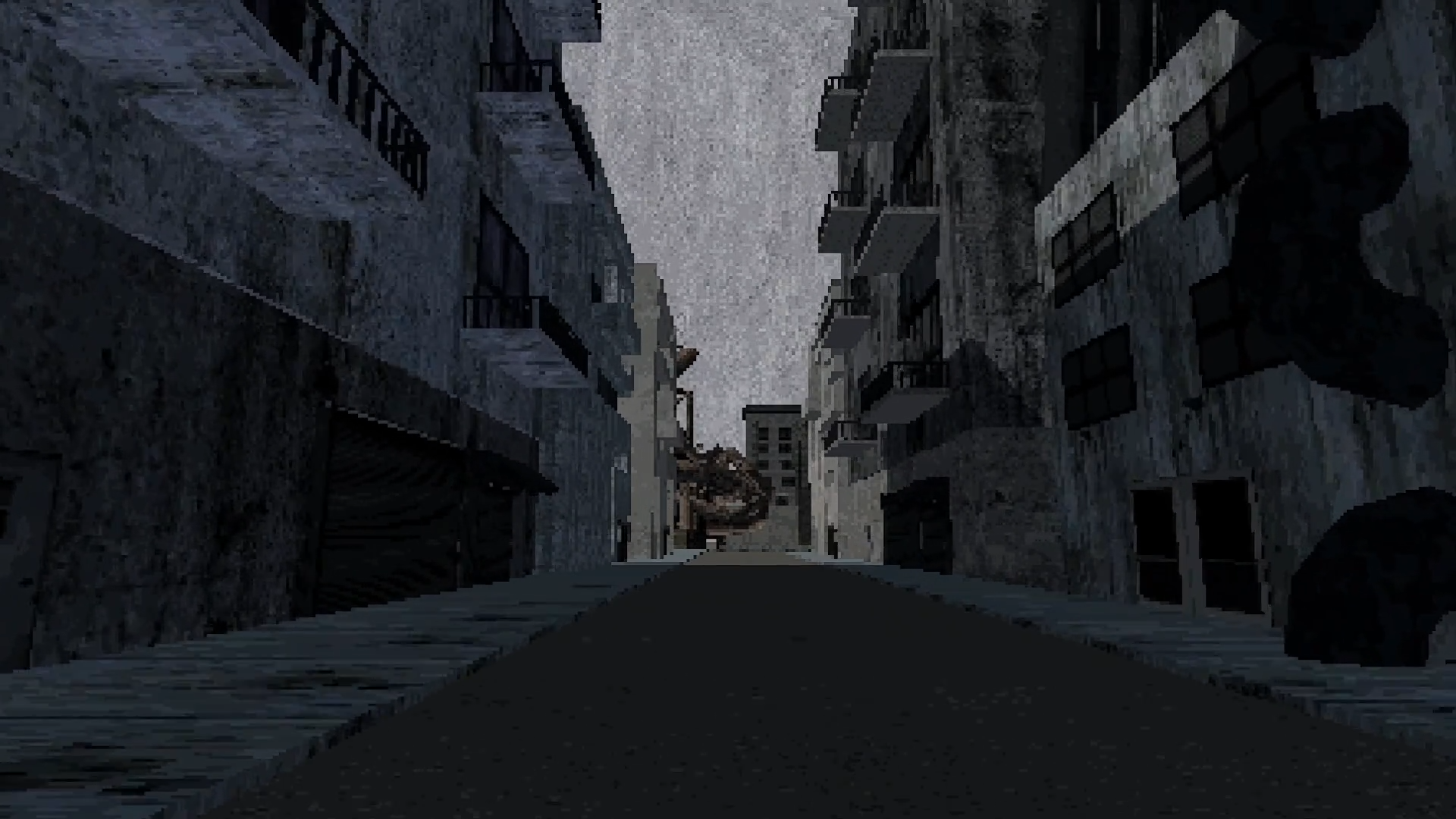
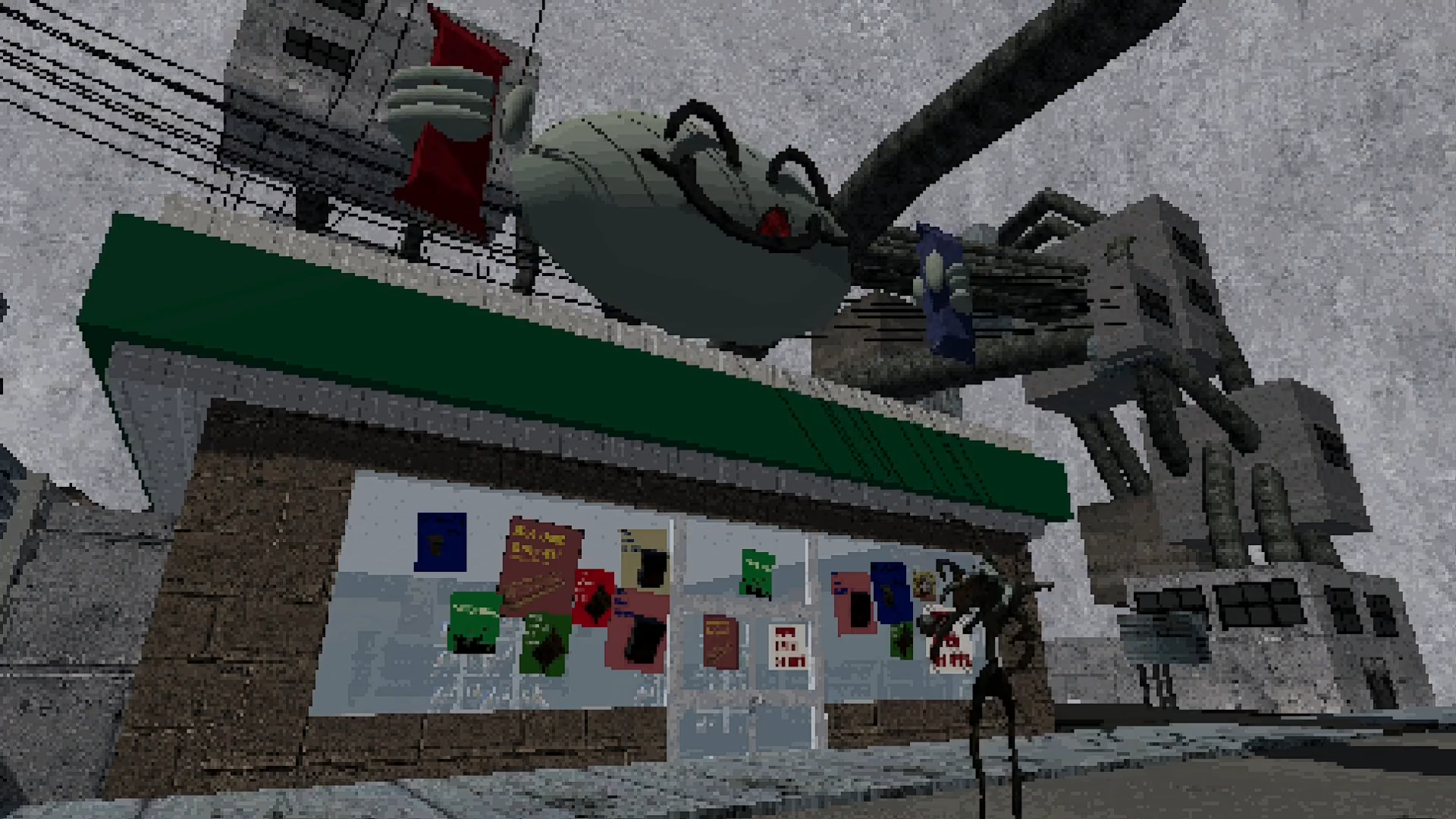
As a follow up I asked if the game would have a lot more to offer the player outside of the main story being told?
Logan: Potentially, I’m not going to know the length until I get some other people playing it. Because I mean, it’s the fact of, you know, it’s an adventure game, and there’s not that many puzzles in it, but I know all the solutions, so it’s impossible for me to judge because the second I play through something, I’m just like, “well, now I have to go there.” And there’s so much of what makes an adventure game longer that’s based on like, you wandering around and figuring things out. And that was kind of one of the main ideas that I really was exploring with this one was just trying to get lost in a space.
I’m not trying to make it too, you know, ambiguous. But there’s a lot of stuff to find that’s not necessary for completing the game and seeing the ending. Like, out of all the NPCs that I’ve made, there’s probably like six or seven so far that I can think of that you need to talk to to progress. And there’s plenty of them that are just there with a conversation that adds something to the world, that adds something to the story. You know, as well as stuff to find in the world that’s not necessarily the solution to a puzzle, as much as it is something interesting. So, yeah, if it takes like an hour or two to see the ending, it will hopefully take a little bit longer than that, that you could just spend in that space, but I won’t know until it’s done.
Having spoken about the mechanical aspect of the game, I was curious to learn about the artistic inspirations for the title, so I asked Logan if there were any specific pieces of media that helped shape the world of Elation of the Wonderbox 6000?
Logan: Man you know, it’s so many things. There’s a lot of inspirations in film, like filmmakers I love, especially I think it informs the way I think about and approach telling a story. But probably one of the biggest influences is just spending a lot of time on forums growing up and just, you know, a life mediated through screens and all that and the effects, I don’t want to say the effects but just that kind of culture, I guess. You know, a very early version of Elation for the Wonderbox 6000 was an idea that it would just take place entirely within a web browser on various forums. And you would have to search through it like that and dig through. And then I kind of realized that an adventure game would be a way to represent that, and it became something different. But that was, you know, certainly one of the primary influences. as far as the original ideas that germinated and kind of became this.
I followed up by asking if he could elaborate on some specific filmmakers who influenced him?
Logan: Oh, gosh, I mean, a lot. I think the one of the most obvious ones visually is like Shin’ya Tsukamoto, Tetsuo the Iron Man, just the stop motion that he does there. You know, it’s sporadic, and there’s an energy to it. As well as just the way in which he tells a story where the narrative is at times sparse, but it’s all there. And you allow the audience to intuit some things. Same with you know, a lot of Lynch stuff, his sense of humor especially. And then for something on that internet side of things, also thinking sense of humor wise, those old CBoyardee videos, you know, like Dilbert three and all that. Definitely a big influence on the way I go about writing this kind of thing. But you know, from Tsukamoto, all those guys, there’s a certain heightened sense of reality, but also not calling attention to that, which I think is something that I tried to do. Dream logic without making it diegetically like “we are in a dream”, that kind of thing.
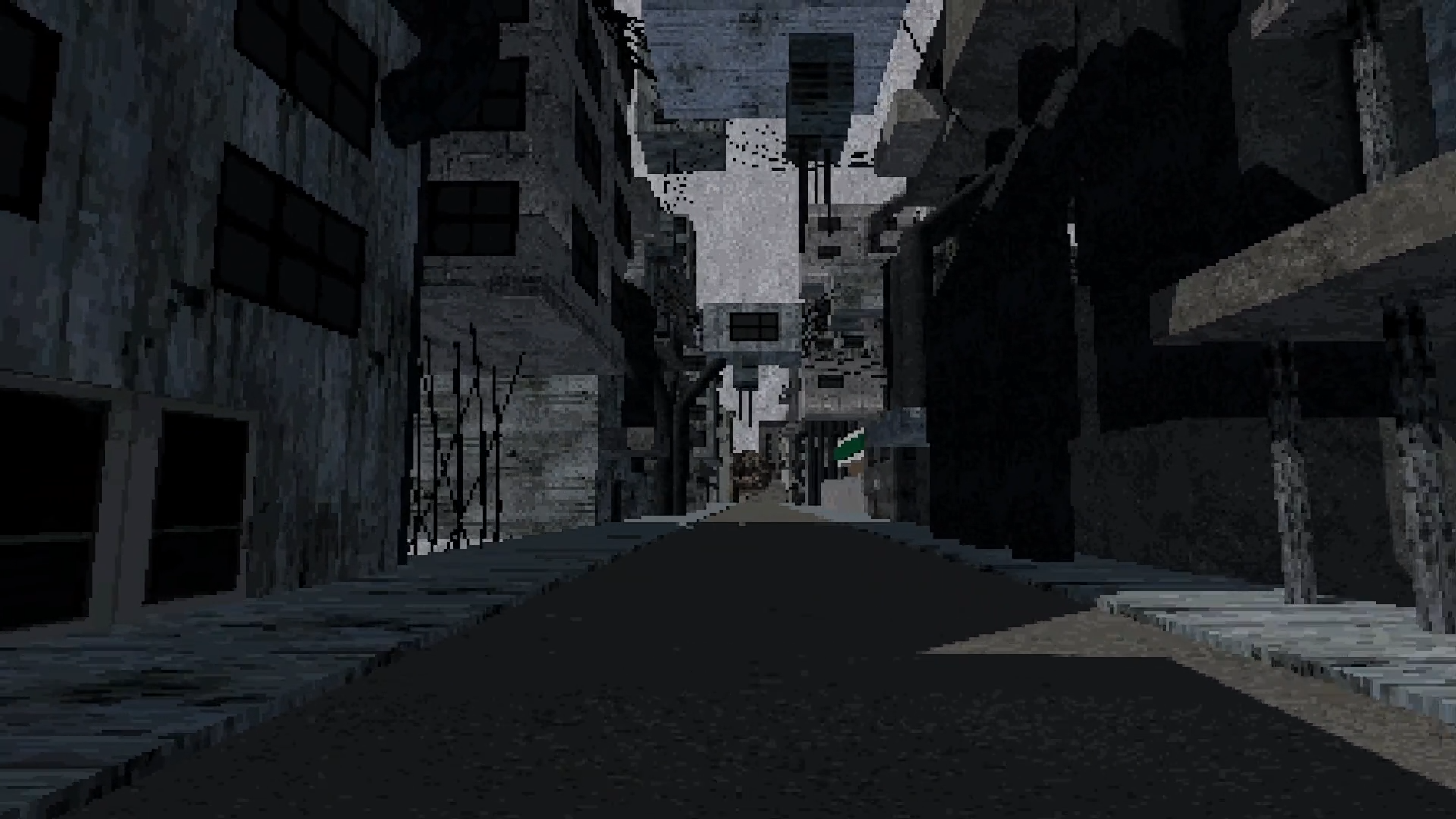
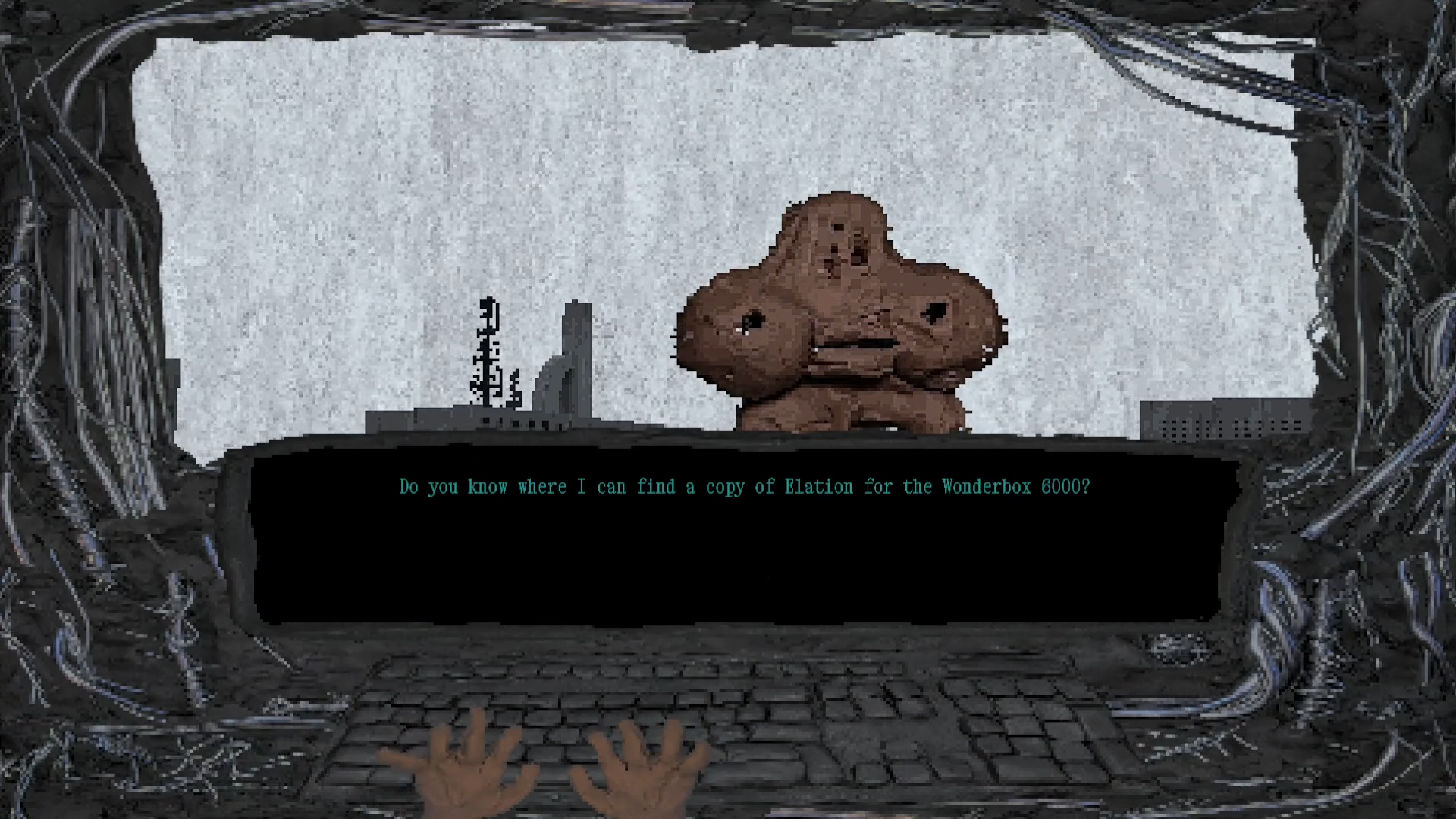
It seemed as though a lot of thought as well as a lot of work had gone into the title so far, with Go Fly a Kite releasing earlier this year, it seemed like having another game out within a year or so seemed like a big undertaking, and I was curious how much time he had put into it already. So I asked Logan how long he had been developing Elation for the Wonderbox 6000?
Logan: In terms of like, man hours, I have no idea. In terms of days, pretty much since I released Go Fly a Kite, I started working on this. To be honest, one of the main reasons I knew I was done with Go Fly a Kite was that I just wanted to be working on this instead, I feel like I had developed the skills. And there’s definitely things wrong with Go Fly a Kite, but I was like, “You know what? I want to do this next one. So I’m going to move on to that.” And yeah, so February is pretty much when I started working on this one. And there’s asset reuse, there’s assets that are in this one, there were in the old one.
I also work in unity, I’d be lying if I said the Unity Asset Store hasn’t been big for certain things, especially systems wise. Like, I use Adventure Creator, this is built on top of the Adventure Creator, which saves a lot of time. I also tend to just start with visuals first, so the game will look done long before it’s done. Which you know that’s just in general my process. It’ll also trick me into thinking I’m almost done. And that’s how I burn through all the testing and coding small things that are very annoying.
On the topic of the artistic side of things, I was eager to learn more about the claymation side of things, specifically, how it was that these characters came to be. Whether it started as a sketch or if he simply sat down with the clay and went to work, I asked Logan if he had a specific method or process of creating these characters?
Logan: Usually I’ll get an idea of something I want to do. It’ll be like, I want to make a guy that looks kind of like this, or a head shape. Because for the most part, I have two separate armatures. And then I also have guys who are just kind of built on top of wire, or even very little wire sometimes. And the armature guys tend to be more shaped like humans, not always, but for the most part they are. And then the other weirder guys, not always, but it’ll either be like, I’ll see something, and that’ll be a big influence. Or I’ll just, I don’t know, have some inspiration. Like, I know that guy who I think is like the first image on the Steam page who’s like a man in a cage that is kind of made of flesh and viscera or whatever. I think the idea that sparked that was I was at the Guggenheim, and there was like a Giacometti sculpture that was a cage that had a man inside of it. And I liked that idea of a cage, and that got me thinking of other things, and so on. And then, you know, that’s how I decided to start working on it. Some of them, I sit down with clay and I try to work out a shape and I come up with something that totally fits, and I decided to use it.
There’s definitely somewhat of a process now, in terms of how to make them, like the eyes and the mouth, you punch a hole, and you fill it with black clay. It’s pretty easy, but you know, I try to play around with it. And then when it comes to photographing, I have a little setup that I dredged out, and I try to photograph at least like three or four at a time. Standing up on a lazy Susan with a magnet on it, and then just taking photos of them rotating it, like 45 degrees for every frame of animation, except for the talking, I cheat that and that’s only head on.
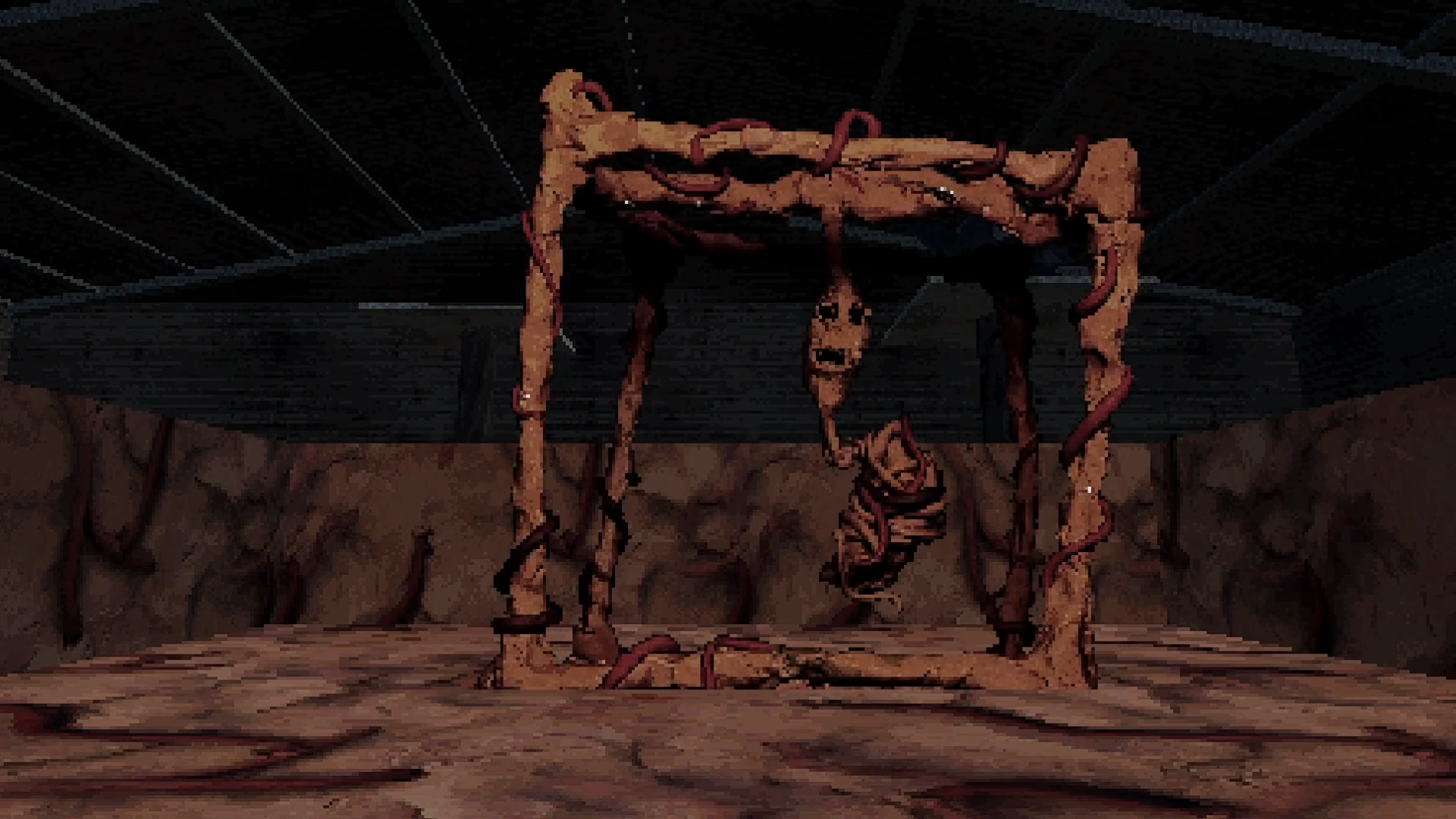
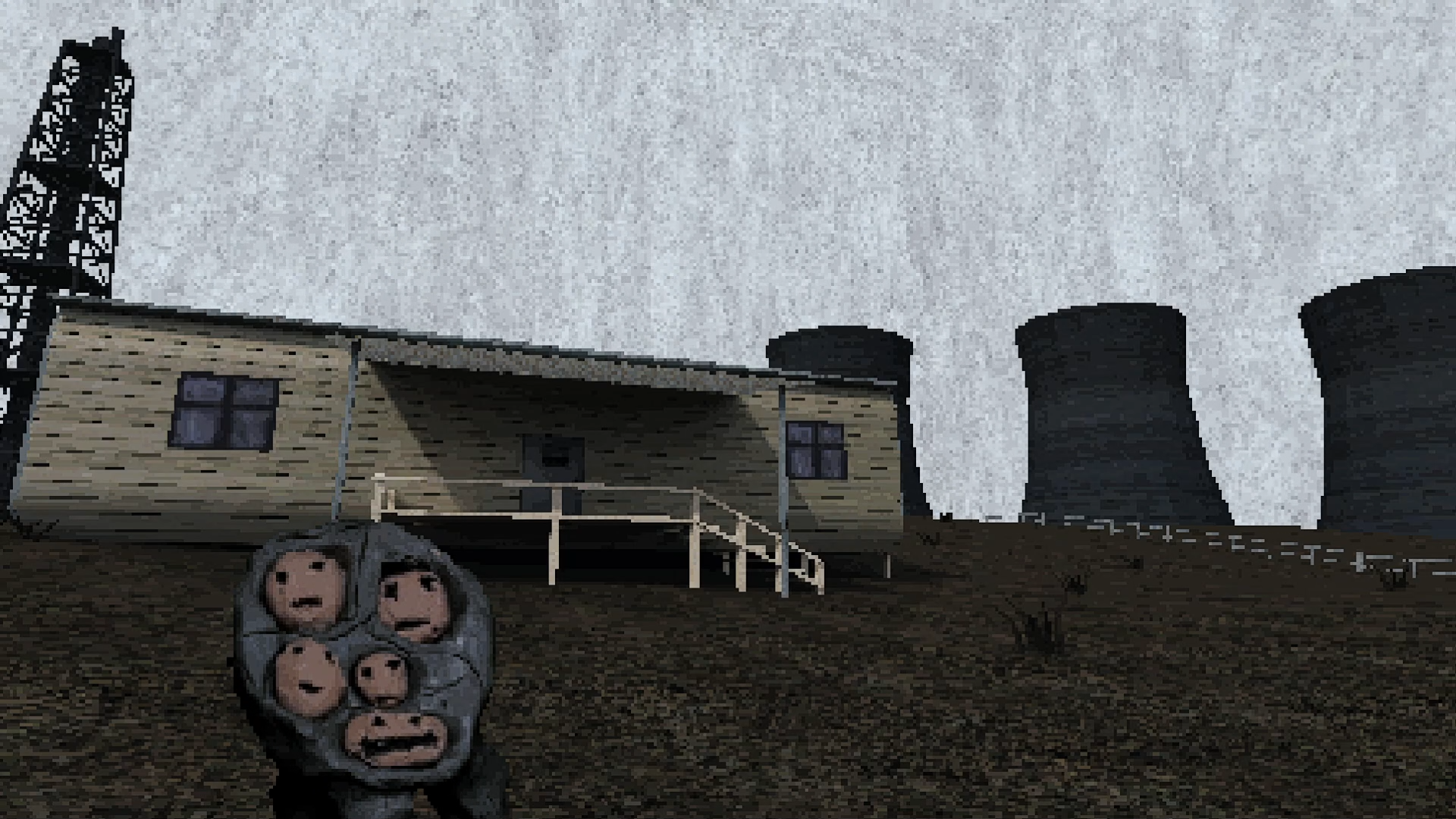
I think a lot of game devs would agree that there is a major distinction between cheating and working smarter, not harder. On the topic of the characters he had created, aside from their physical appearance, I was curious to learn about how he fleshed out all of the different types of people you would find in the city, so I asked him how he brings the denizens of the city to life?
Logan: With the characters at least it usually stems from if I can think of an interesting conversation, like they really start from conversation first, and then you build outward. And it’s like, okay, who is this guy? Because here’s a couple interesting ideas to play around with, you know. And sometimes they fit into something that’s like, thematically consistent, sometimes it’s not, but it’s sort of where they come from and how they’re experienced. I will say that one of the original ideas for this game was that, you know, I love JRPGs, and the best part of any JRPG is when you stop playing the JRPG, and you go to the town, and you get to just hang out in a little space. And there’s nice music, and there’s people to interact with and it feels like a place that people have been. And you just get to explore it a little bit, the idea was kind of a game that was just that, from start to finish was just that part of the JRPG, which I kind of realized is what an adventure game is. As you know, I love adventure games as well. But that was kind of the jumping off point for the city. And as you know, as far as the construction goes, it’s just shapes I find interesting, you know. I have a fondness for that kind of industrial architecture. It looks cool to me. And gives me an excuse to, you know, walk around that kind of place and take photos for textures.
It certainly sounded like there would be a lot to see in the city, but I was curious about the world of Elation for the Wonderbox 6000 outside of the city. I asked Logan if the world outside of the city would play into the story for the game at all, or if the game would only concern itself with the city and the citizens therein?
Logan: I would say, we only really worry about the machinations of the city. Like there’s not much that I’ve written that references stuff outside of the city. But at the same time, I think that a lot of what people talk about is not necessarily constrained to the city. A lot of the writing and the things that the characters are concerned with, is not limited to what you can see in the space that you see it. As well as that, I would say the majority of the kind of plot that I’ve written, some of the most important stuff is just things that side characters are concerned about. Because at the end of the day, you’re going to this city, and you’re just trying to find a copy of Elation for the Wonderbox 6000. That is your one and only concern, so the world around you is in a big way the story behind what happens around that search.
One character shown in the trailers that most certainly left me wanting answers was the gun wielding man. Desperate to learn how a search for an old game led to someone being shot point blank, I asked Logan if the man with the gun was the player, and if not, is he pointing the gun at the player?
Logan: Oh, gosh. It is somebody else, I’ll say that… it is not pointed at the player. These are all side characters, I have that sort of narrative through line of the search for Elation. But, you know, again, thinking of the density thing. It’s just like if I have an idea that I think fits in this world, in this space, I put it in, you know. So there’s sort of, you know, stories, things that people will tell you about that might pop up and things other people will talk about. And you know, if you ask, you can find out, but it’s all it’s all just there, you know.
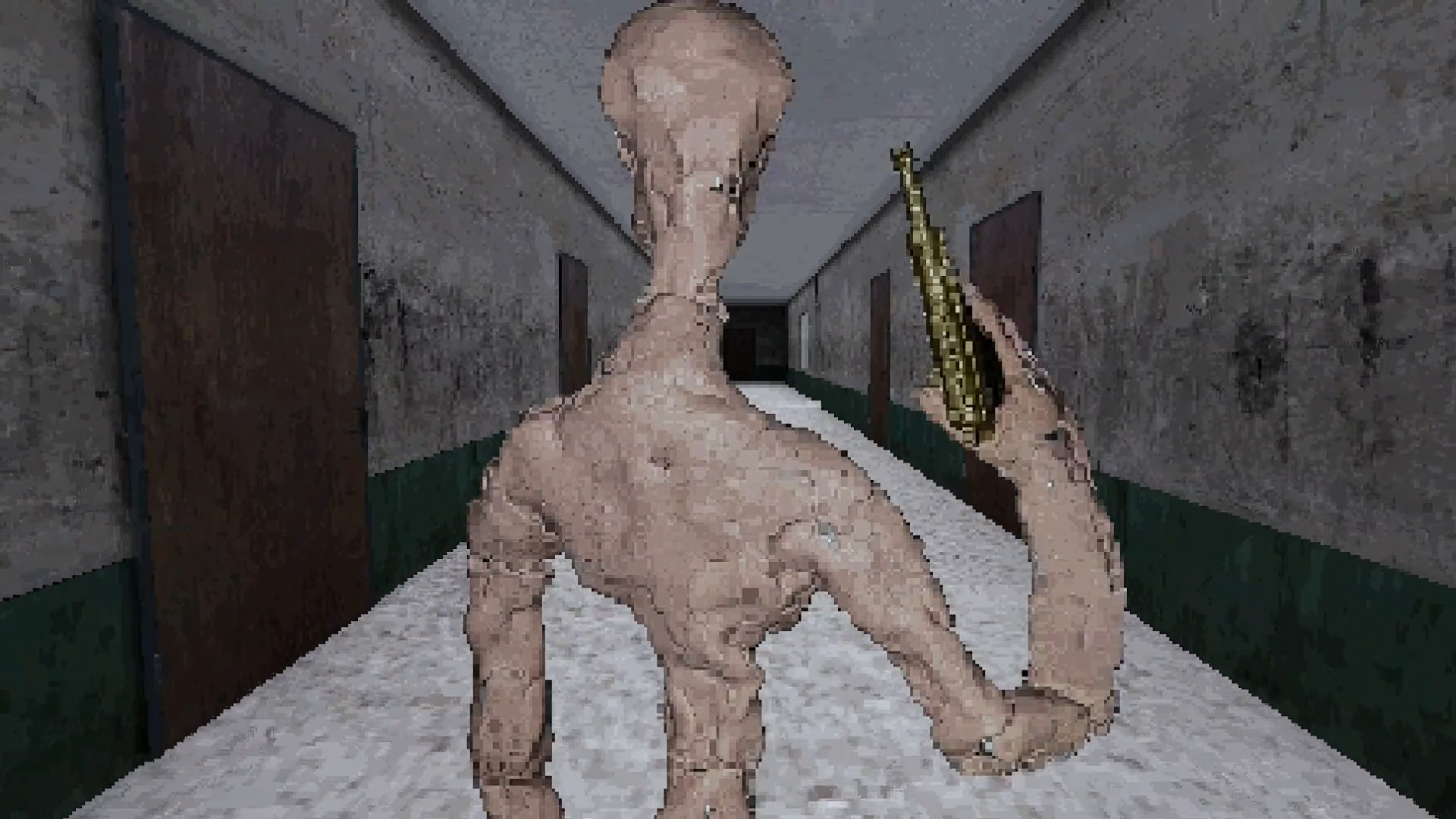
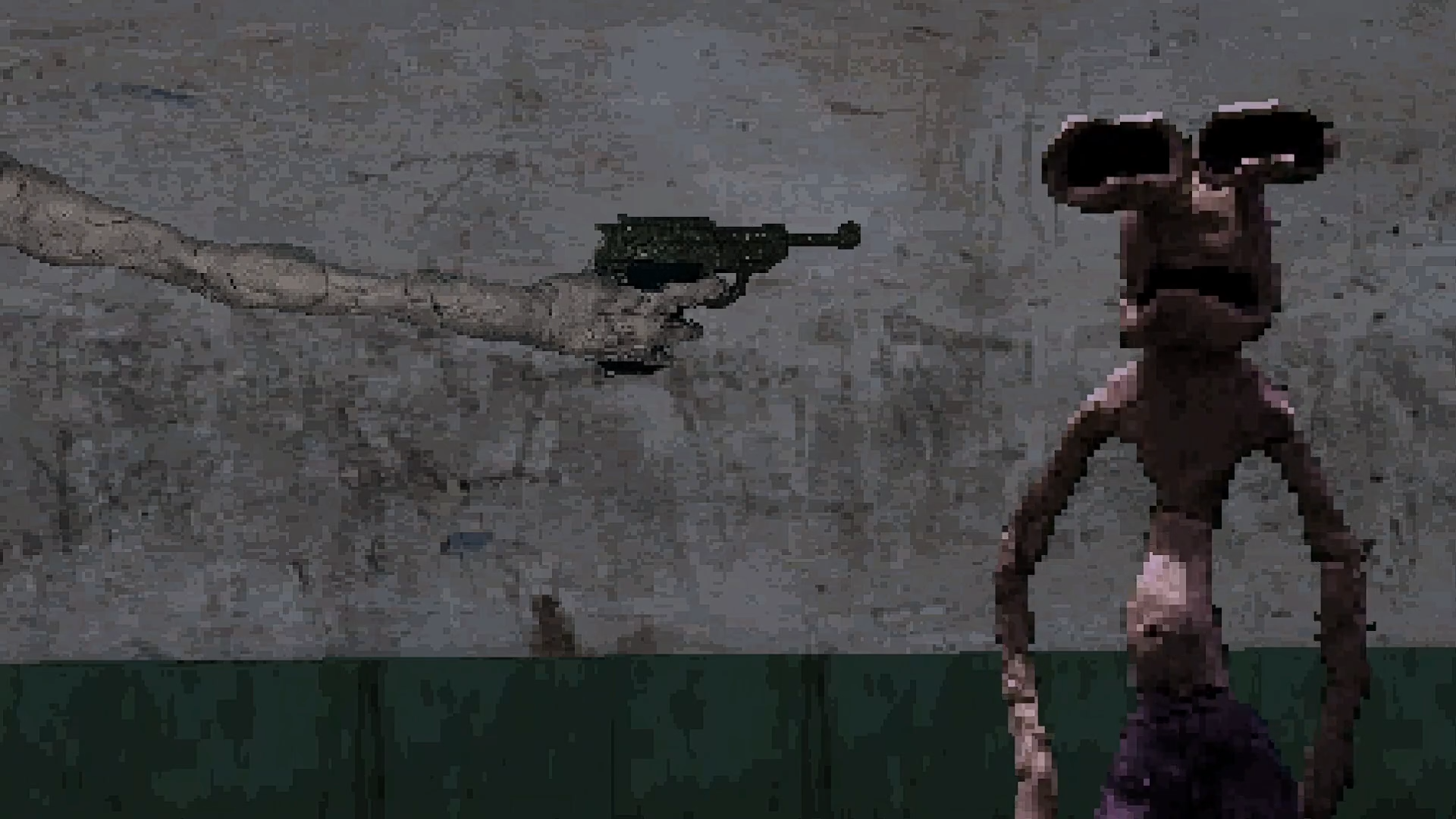
Having spent so much time talking about the game he was making, I wanted to know more about the game within the game. Hoping to learn why someone would go through so much for a copy of Elation for the Wonderbox 6000, I asked Logan if he could tell us about the Wonderbox 6000 itself?
Logan: So the Wonder box 6000 came out… However, one of the things that you will learn in the game is that it had a very dumb, proprietary method of making sure that you didn’t sell used copies, which was to hard code to games inside the box. So you had to buy a whole new console for every new game you wanted, so the thing never took off. You know, A lot of people didn’t play it, most people thought it was a dumb idea. Most of them ended up in landfills, you know, it just was not a big hit. But somehow you played it as a kid and it left a huge impact.
I could understand that feeling, if I had to, I would probably go on a crazy adventure to get a copy of Resident Evil no matter what console it was on. As a follow up question I asked if he could tell us what kind of game Elation for the Wonderbox 6000 was?
Logan: I’m trying to think of the best way to answer this. I’ll just say it remains to be seen what kind of game Elation is. I want to avoid spoilers. It’s the central, one of the central plot motivators, I can’t just say what Elation was.
Before I moved on to my final question, I wanted to know how Logan felt about the development of the title, 2023 is not too far away, and there is a lot of work going into this title, so I asked Logan if he felt comfortable telling us about where he was at in development?
Logan: At this point, I’m not done with the claymation side of things, I have to get back to that. But the stuff I want to make for the most part is kind of dependent on knowing where everything is. So I’m finishing up the environments right now. Because I think that kind of in my mind defines the possible space of what I have to work with. And then once I finish up the environments, I figure out, are there any like, you know, mission critical characters that I haven’t put into the game yet. And I’ll make those. And then lastly is honestly making the main character and the scenes featuring him. I haven’t made him because I have to kind of tear down all the characters I make after I make them. Until I have everything in place I won’t know, like, what animations I’ll need for him and whatnot. So he kind of has to come last.
And then you know, I’ll finish up the animations, and then that also goes along with, like, implementing the puzzles. I have the puzzles written, and I have objects for the puzzles made, but I haven’t implemented all the puzzle logic, exactly. You know, it’s a lot of there’s a key there and there’s a door that’s locked, but I haven’t made it so that that key opens that lock, if that makes sense, or that those doors were even locked, right now you can just open it. But that’s the benefit of being a one man dev is you can work on whatever you want to at any given time… And then it’s kind of just filling it with stuff that I find interesting until I run out of things I find interesting. Like once I finish the environment, and get everything up, I plan to just fill the world with little secrets, little things to find, ideas that I think are interesting, that I think would fit. And once I have enough, then it’s done. Or if I want to make something for the next game I have planned, once that one starts calling my name too much, I’ll call it done.
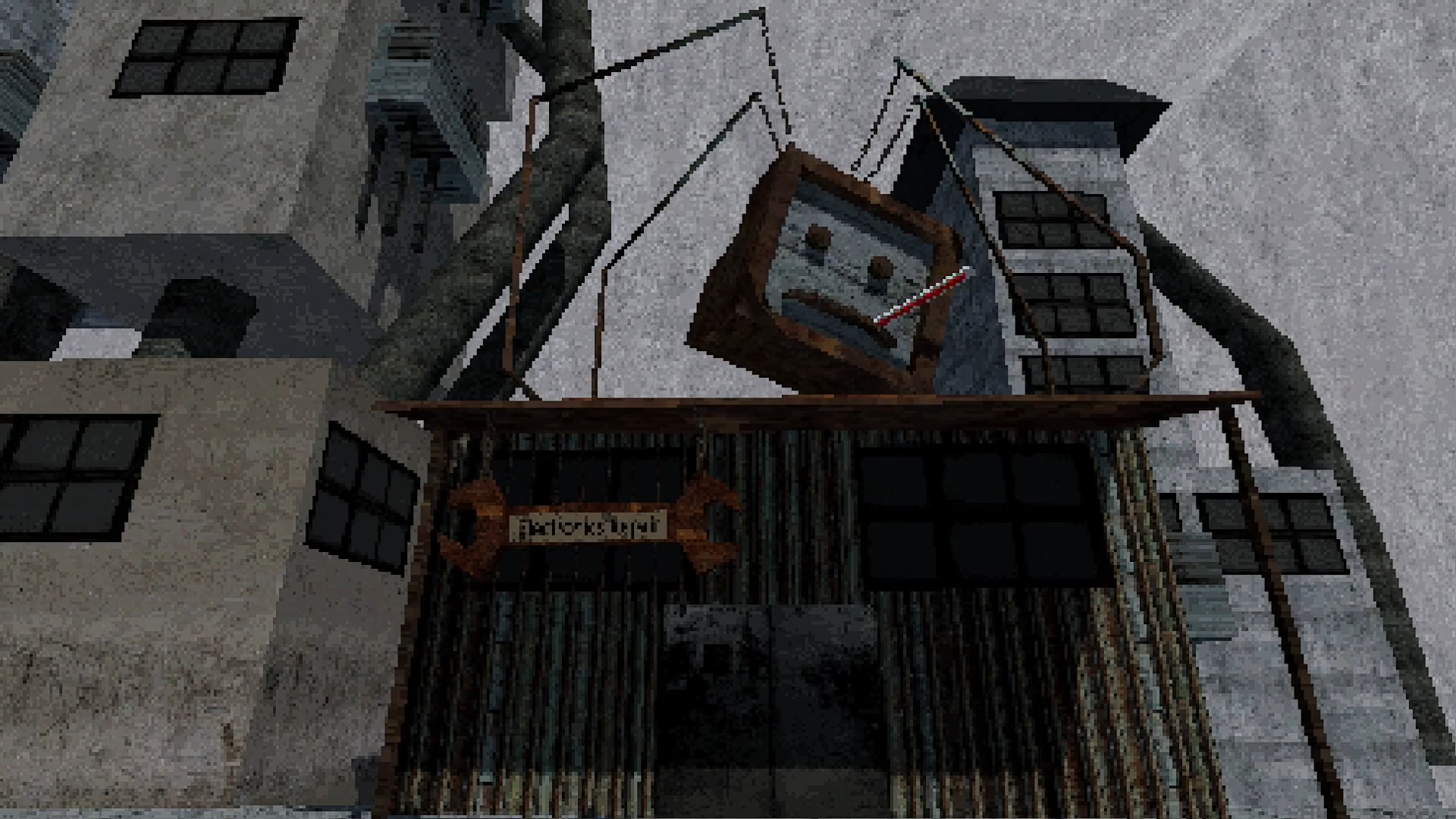
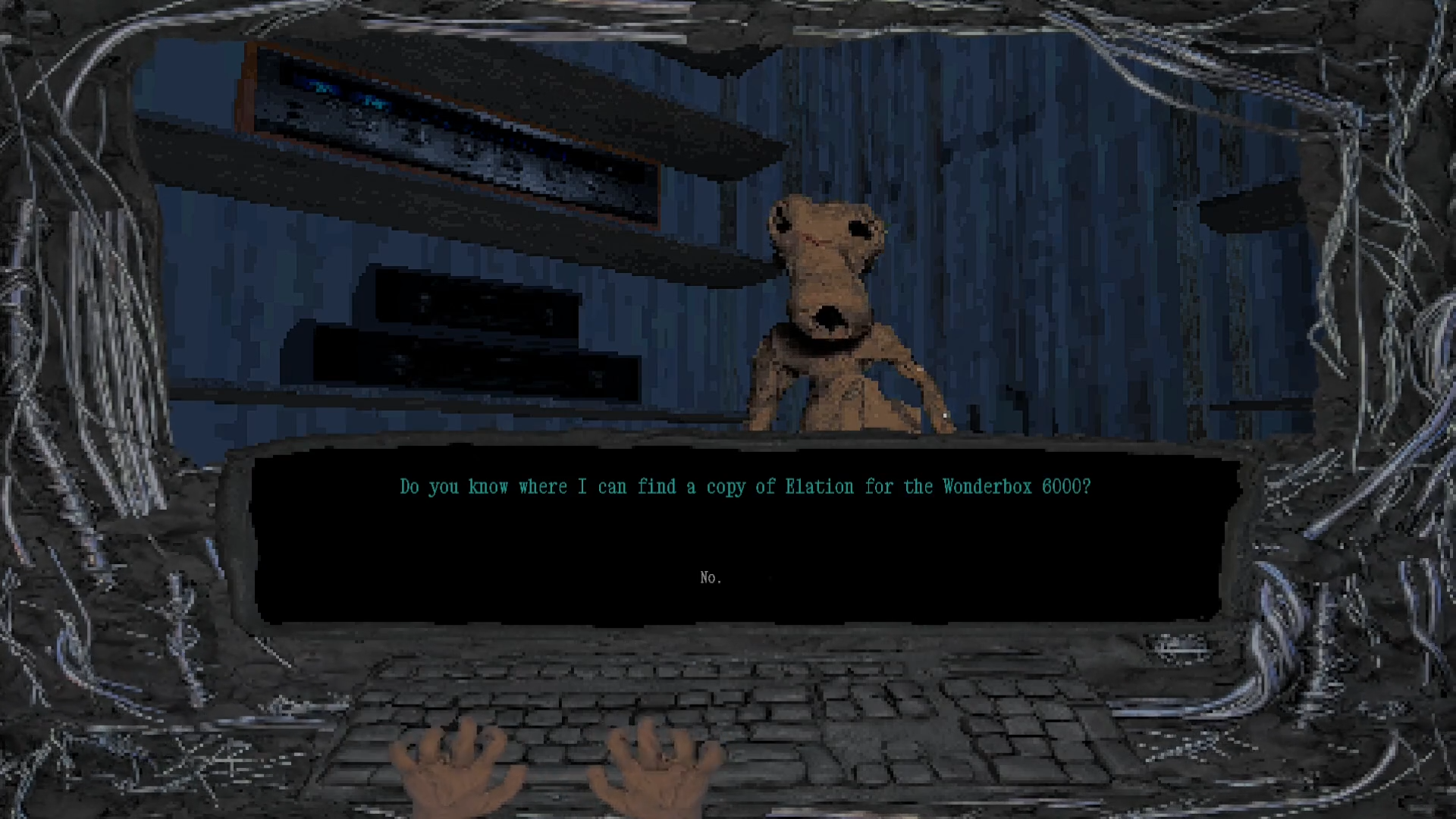
That gave me a good laugh, I really appreciated that he acknowledged the possibility of that happening again.
Logan: I mean, like that is a big way of which I’m able to finish things. I’m very much not a perfectionist, and there’s a lot of things where I say this is good, but I’ll come back later and make it better. However, if I did that, I would never be done with anything. So it ends up just being good enough, and that’s fine by me. The important details are in there, but maybe some of the excessive detailing work is not.
I could absolutely understand that, the most important thing about making any art is that you yourself enjoy it, and if you enjoy it the way it is, there is no reason to go out of your way to impress others.
Logan: Yeah, you gotta like it, and also you have to care about it. And I think I could, you know, make the most hyper detailed objects in the world. But to me, if I feel like I’ve made something that evokes what I want to evoke simply, then I’m good to go. And in some ways I think that that can be more evocative, you know. I think that like those early 3D and fake 3D FPS games, you know, like the Build engine things you know, your your Bloods and your Duke Nukems up to like the first Half Life, those feel way more like real places than something like, I don’t know, like Call of Duty or something where everything is hyper detailed, but it’s so so detailed your eyes glaze over, I think there’s a beauty and simplicity invoked in those places.
Before I wrapped up the interview, I had one more question about the gun wielding goon shown in the trailer. Was he also looking for a copy of Elation for the Wonderbox 6000, and if not, would he have ended up the way he is if he had played it?
Logan: He is not… He is a perturbed radio listener… I don’t think anything could have saved him.
And with that last intriguing answer I wrapped up the interview, thanking Logan again for taking the time to meet with me and discuss his work.
If you want to keep up to date on the development of Elation for the Wonderbox 6000, be sure to check out Logan’s Twitter page, and be sure to wishlist the title on Steam so you can avoid any big city scavenger hunts and pick it up as soon as it drops.
And of course, if you are fiending for the latest and greatest in ghoulish and gruesome gaming, then head back to DreadXP.com and read more of our frightful features!
Categorized:Interviews

